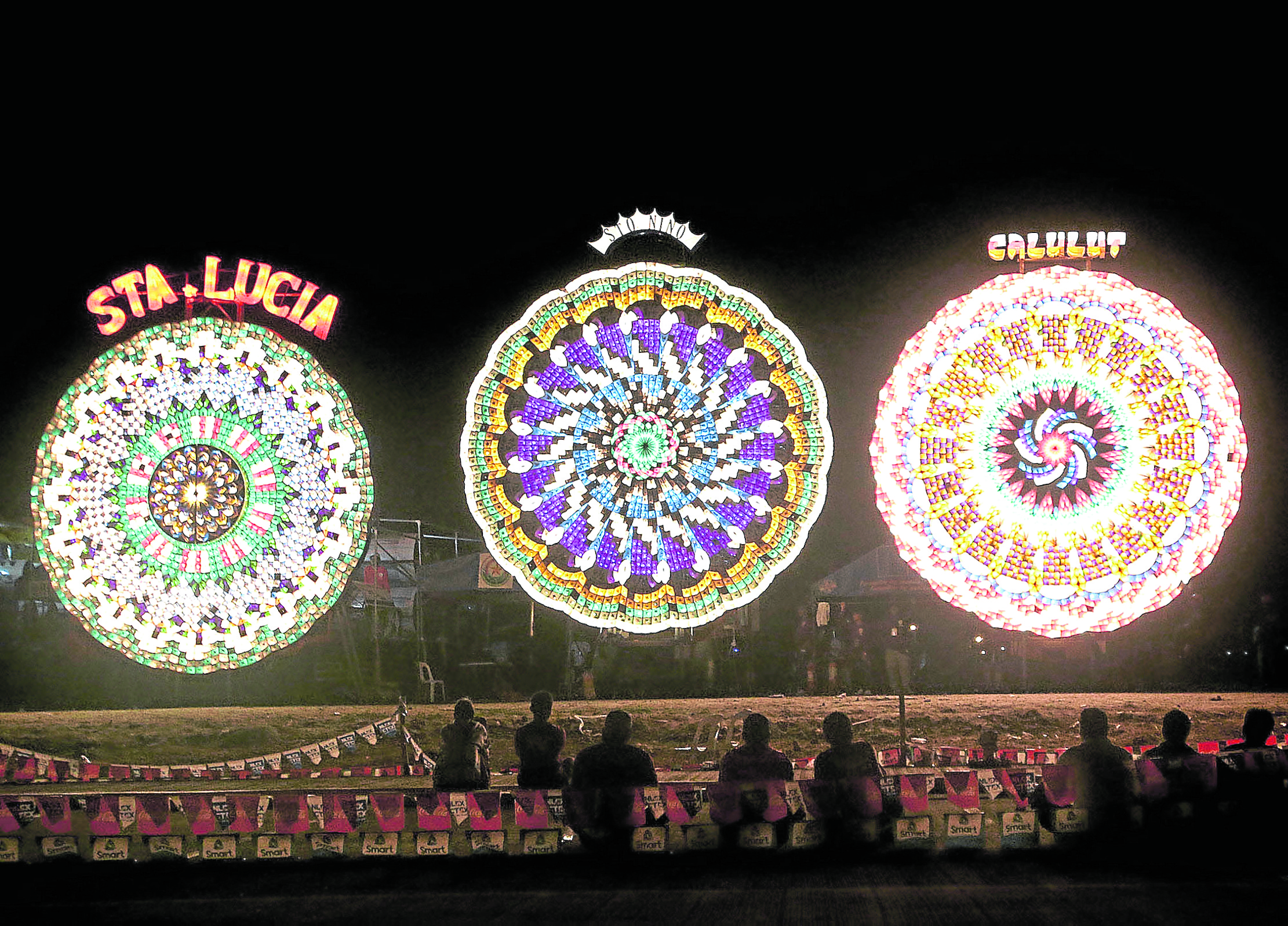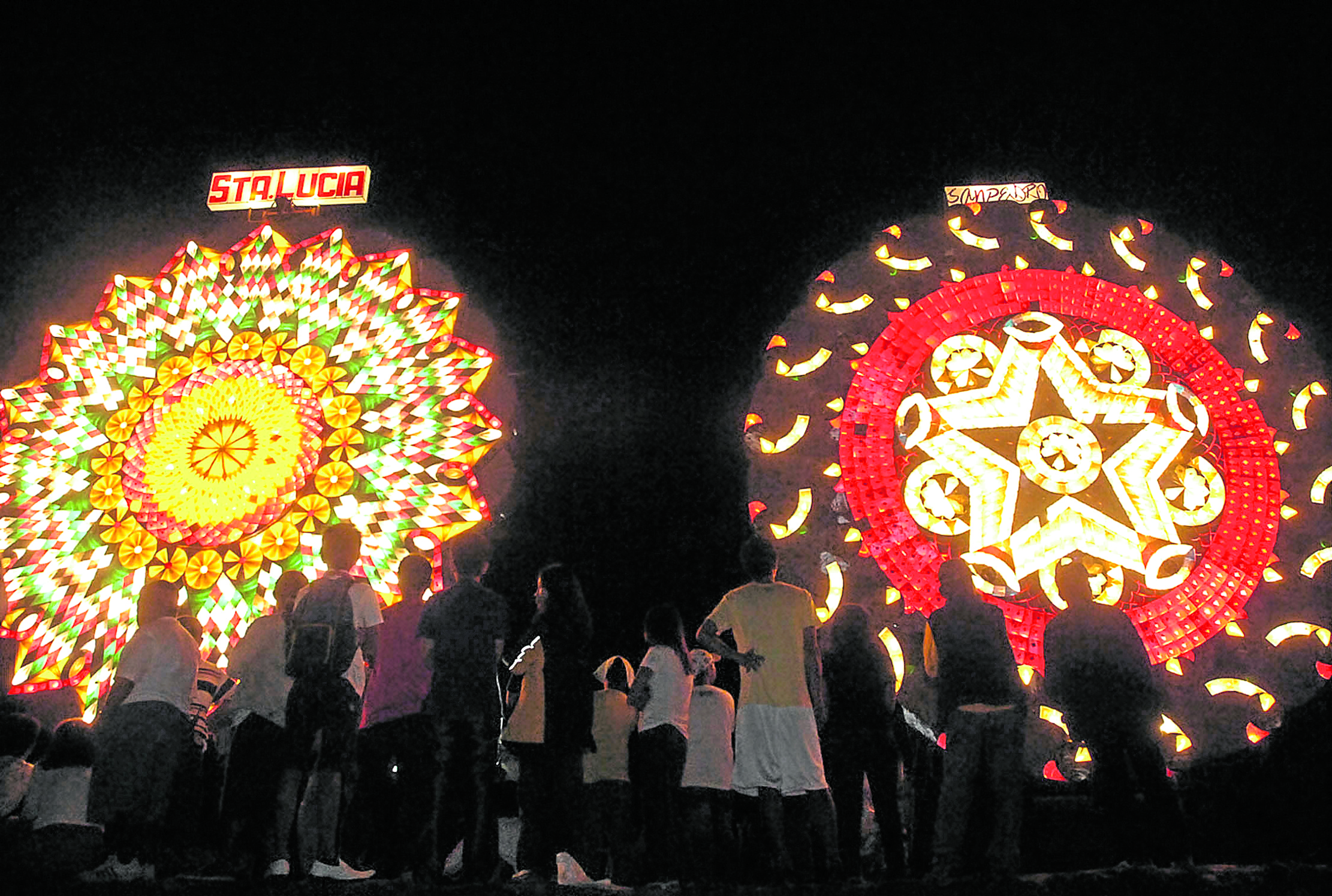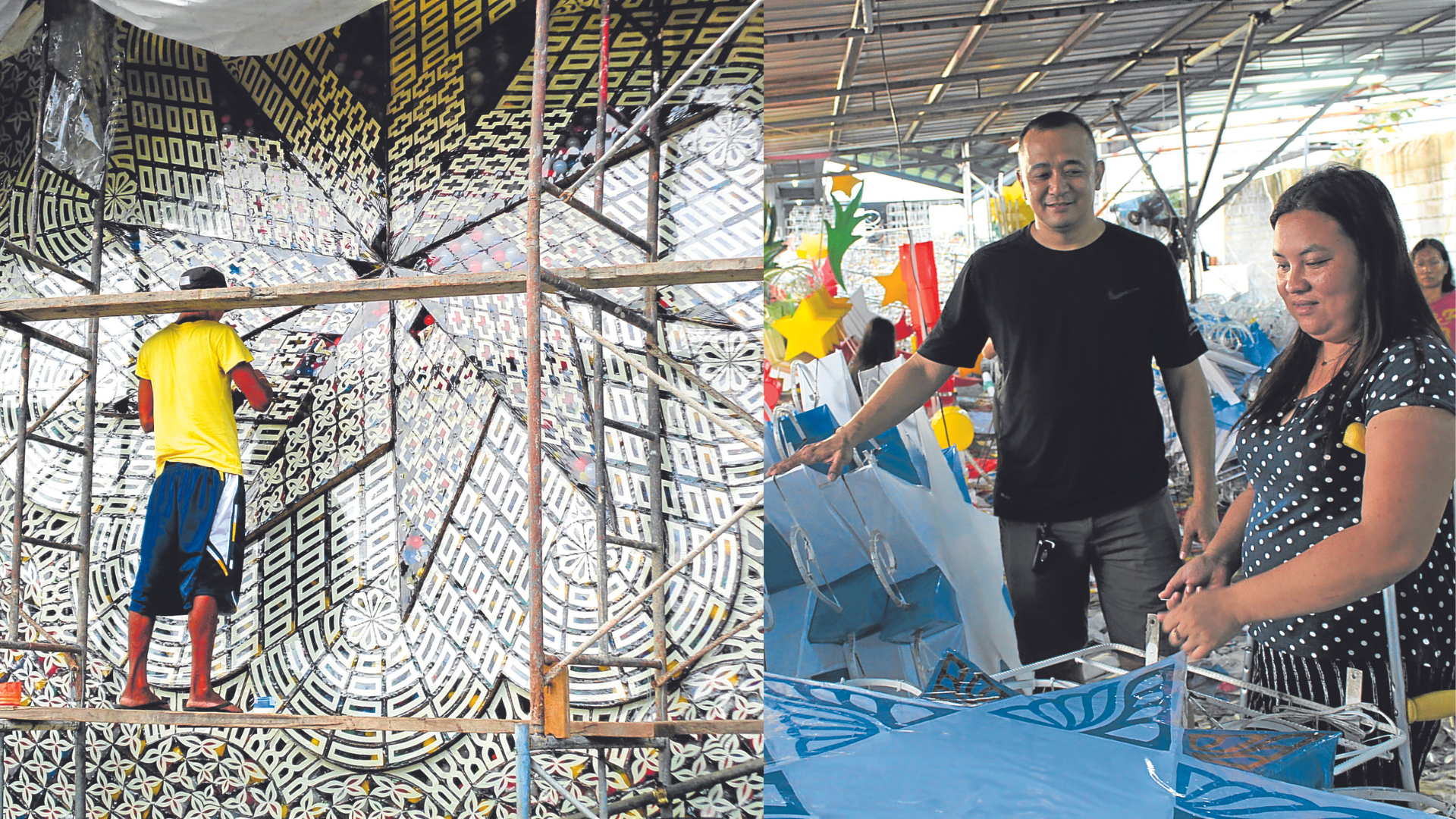Pampanga lanterns dazzle, endure

WONDERS No other place in the Philippines or in the world makes giant lanterns as big as those in the Pampanga capital of San Fernando. The artisans are not engineers or schooled in the craft and arts. The rotor, a local invention made of hair clips and masking tapes, makes the “parul” lights go on and off, as if these were dancing to an accompanying beat during the Ligligan Parul staged every December. —PHOTOS BY RICHARD REYES, MARIA ADELAIDA CALAYAG AND TONETTE OREJAS
CITY OF SAN FERNANDO—This capital city of Pampanga, the country’s “Christmas capital” and home to the giant parul (lantern), is starting to burst with color as the holiday fever kicks in.
The century-old tradition of lantern making is rooted in the culture of Kapampangan and the industry continues to thrive with the help of seasoned craftsmen like Arvin Quiwa, a fifth-generation lantern maker in their family.
Quiwa started making lanterns at the tender age of 13, helping his father, Ernesto, 76, fondly called “Tatang Erning” in their community.
All five children of Tatang Erning are skilled lantern makers, and their family traces its roots to Francisco Estanislao, a renowned lantern maker in the 1900s.
According to Robby Tantingco, director of the Holy Angel University Center for Kapampangan Studies, crafting lanterns in the province began in Spanish colonial times.

WONDERS No other place in the Philippines or in the world makes giant lanterns as big as those in the Pampanga capital of San Fernando. The artisans are not engineers or schooled in the craft and arts. The rotor, a local invention made of hair clips and masking tapes, makes the “parul” lights go on and off, as if these were dancing to an accompanying beat during the Ligligan Parul staged every December. —PHOTOS BY RICHARD REYES, MARIA ADELAIDA CALAYAG AND TONETTE OREJAS
Kapampangans back then used to create lanterns out of paper and candlelight on bamboo poles that devotees held during “lubenas,” a religious land procession during the Christmas season that is still being practiced in several towns in Pampanga.
Eventually, the procession took on a new style, and lubenas became “ligligan,” or a competition of giant lanterns using rotors, a lighting system that provides spectacular patterns of lights.
Tantingco cites Rodolfo David as the inventor of the rotor, an aluminum sheet rolled like a barrel and which functions like a sequencer. Its sizes vary from as short as 3 inches (also called a baby rotor) to as long as 5 meters. It all depends on the number of light patterns.
It works by welding a steering wheel to the rotor, allowing lantern operators to turn it or make a half or full circle based on the type of light patterns that are displayed.
International reach
As a skilled lantern maker, Quiwa has been tapped by different local government units to supply them with giant lanterns. Some of his creations reached other countries, and had been displayed in Dubai, Singapore and Jerusalem.
He has created job opportunities for their neighbors in his home village of Sta. Lucia, employing around 100 workers during the peak lantern-making season from September to December.
One of his workers, Lamberto Dungca Jr., who has been with the Quiwa family for 47 years, could earn as much as P5,000 weekly, depending on the number of lanterns that he could complete.
Quiwa said their life back then was quite hard; his father did not finish his studies but managed to send them to school by creating lanterns.

WONDERS No other place in the Philippines or in the world makes giant lanterns as big as those in the Pampanga capital of San Fernando. The artisans are not engineers or schooled in the craft and arts. The rotor, a local invention made of hair clips and masking tapes, makes the “parul” lights go on and off, as if these were dancing to an accompanying beat during the Ligligan Parul staged every December. —PHOTOS BY RICHARD REYES, MARIA ADELAIDA CALAYAG AND TONETTE OREJAS
He has hired some of their neighbors and opened his door to people with disabilities, like Janet Bondoc, 30, who works by gluing together the plastic vinyls on parul frames even as she struggles in her crutches.
“The lanterns should be creative and innovative. My designs are still relevant because I adapt to what the people want to see,” Quiwa said.
His group usually make lanterns out of capiz shells from January to June. His capiz lanterns, he said, have been patronized by the local governments, like those in Iloilo and Mindoro. His group also creates lanterns for Valentine’s Day and other festivals.
Eric, the eldest son of Tatang Erning, is one proud lantern maker who created the national costume (LuzViMinda) of beauty queen Catriona Gray during the Miss Universe 2018 pageant held in Thailand.
According to Eric, he refused a payment for his creation, noting that the privilege to contribute to the success of a fellow Filipino in the international arena was reward enough for him.
“We’re proud to know that our creation is now kept and displayed at the National Historical Museum,” Eric told the Inquirer.
A replica of Gray’s lantern is kept in the Pampanga Tourism Office.

WONDERS No other place in the Philippines or in the world makes giant lanterns as big as those in the Pampanga capital of San Fernando. The artisans are not engineers or schooled in the craft and arts. The rotor, a local invention made of hair clips and masking tapes, makes the “parul” lights go on and off, as if these were dancing to an accompanying beat during the Ligligan Parul staged every December. —PHOTOS BY RICHARD REYES, MARIA ADELAIDA CALAYAG AND TONETTE OREJAS
Eric also takes pride in the opportunity given to him when he was commissioned by the Lapu-Lapu City government to create the giant lantern for the 2021 quincentennial commemoration of the Victory at Mactan and other related events in the Philippines (1521-2021) at the Liberty Shrine in Cebu with a tribal lantern design of the border boxer codex.
Eric, who started crafting lanterns at age 14, incorporated his skills in architecture and his son’s knowledge in marketing. They usually create lanterns with different themes, like Mediterranean, modern, classic, and native.
He also executes three-dimensional and fiberglass lanterns that are air-brush finished.
Eric said he was also sent by the Pampanga Tourism Office to the United States to exhibit his lanterns.
The Quiwa siblings were a tandem in previous stagings of the Giant Lantern Festival (Ligligan Parul) and even bagged championship titles.
‘Parul King’
Another parul maker, Roland Quiambao, 68, brought back the Christmas spirit and hope of the Kapampangans after they were devastated by the Mt. Pinatubo eruption in 1991.
Quiambao was commissioned by then San Fernando Mayor Rey Aquino to make lanterns to convince the people to stay in Pampanga.

JOB CREATION Every giant Christmas lantern created in Pampanga’s capital city of San Fernando is a product of meticulous work among the local craftsmen. At right, renowned Kapampangan lantern maker Arvin Quiwa guides his differently abled worker, Janet Bondoc, 30, a widow, in creating one of their products in time for the holiday demand. Quiwa says he wants his business to provide job opportunities in these trying times. —TONETTE OREJAS AND MARIA ADELAIDA CALAYAG
“People’s livelihood at that time was devastated, but the dazzling parol provides hope for the locals that life here will change for the better,” Quiambao said.
He was dubbed the “Parul King” by students and visitors who would often visit him in his shop.
Quiambao created the lanterns that were displayed in Taipei in 2003 during the Taiwan International Lantern Festival.
Some local and foreign visitors would often drop by his shop where Quiambao used to teach the history of lanterns, how to craft them and how Kapampangans take pride in them. He describes it as one of Pampanga’s tourist stopovers.
Quiambao believes lantern making in Pampanga will not die, and “should not die,” as it is a source of pride and a symbol for the country. INQ

